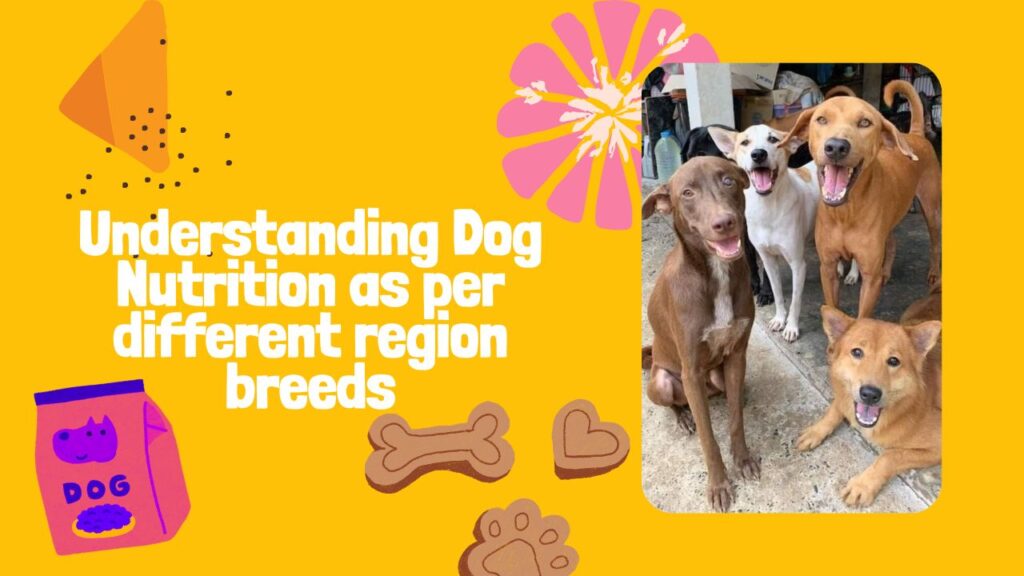Dogs are not just pets; they are beloved family members who bring joy, companionship, and unconditional love into our lives. As responsible dog owners, it’s essential to understand their nutritional needs to keep them healthy and happy. In this blog post, we will explore the vital nutrients that dogs require, helping you make informed decisions about their diet. Let’s dive into the world of canine nutrition together!
Quality Ingredients

When it comes to dog food, quality matters immensely. Just like us, dogs thrive on nutritious ingredients that support their overall health. Here are some key components to look for in high-quality dog food:
- Named Meat Sources: Ingredients like chicken, beef, or lamb should be clearly stated. These provide essential proteins that aid in muscle development and overall vitality.
- Whole Grains: Ingredients such as brown rice or oats serve as excellent sources of carbohydrates, providing energy for your dog’s active lifestyle. Whole grains also contain fiber that supports digestive health.
- Fruits and Vegetables: Ingredients like blueberries, carrots, and spinach are packed with vitamins, minerals, and antioxidants. These help boost your dog’s immune system and promote healthy skin and coat.
- Healthy Fats: Look for sources of omega fatty acids, like fish oil or flaxseed. These fats are essential for maintaining a shiny coat and supporting brain health.
Choosing dog food with these quality ingredients can significantly enhance your dog’s health and well-being. Always remember that the first few ingredients listed on a dog food label are the most important, as they make up the majority of the product.
Ingredients to Avoid
While understanding what to include in your dog’s diet is crucial, knowing what to avoid is equally important. Here are some harmful ingredients commonly found in lower-quality dog foods:
- By-Products: Ingredients labeled as “meat by-products” can include unwanted parts of animals that don’t contribute much nutritional value. Opt for whole meats instead.
- Artificial Additives: Preservatives, colors, and flavors can be harmful to your dog’s health over time. Look for natural alternatives that do not contain these additives.
- Fillers: Ingredients like corn gluten meal or soy can be used to bulk up dog food but offer little nutritional benefit. They can lead to allergies or digestive issues in some dogs.
By educating yourself about these harmful ingredients, you can make better choices for your furry friend’s diet.
Reading Labels
Understanding how to read dog food labels is essential for making informed decisions about your pet’s nutrition. Here’s how to effectively assess a dog food label:
- Ingredient List: The ingredients are listed in descending order by weight. The first ingredient should ideally be a named meat source, followed by whole grains or vegetables.
- Guaranteed Analysis: This section provides information on the percentage of protein, fat, fiber, and moisture in the food. Look for a protein content of at least 20% for adult dogs and higher for puppies.
- Nutritional Adequacy Statement: This indicates whether the food meets the standards set by the Association of American Feed Control Officials (AAFCO). Foods labeled as “complete and balanced” have met these standards.
By mastering label literacy, you can confidently choose high-quality food that meets your dog’s specific needs.
Understanding Claims
Dog food marketing can be confusing with various claims made on packaging. Here’s a breakdown of common terms you might encounter:
- Grain-Free: This means the product does not contain any grains like wheat or corn. While some dogs may benefit from a grain-free diet due to allergies, it’s not necessary for all dogs.
- Natural: This term generally means that the food contains no artificial colors or flavors; however, it doesn’t necessarily guarantee high-quality ingredients.
- Human-Grade: This claim suggests that the ingredients meet human consumption standards. While this sounds appealing, it’s essential to verify that the entire product is indeed suitable for human consumption.
Understanding these terms helps you navigate through marketing jargon and make better dietary choices for your dog.
Common Questions About Understanding Dogs’ Nutritional Needs
- What should I look for in dog food?
- Look for named meat sources, whole grains, fruits, vegetables, and healthy fats.
- Are grains bad for dogs?
- Not necessarily; many dogs digest grains well. However, some may have allergies requiring a grain-free diet.
- How much protein does my dog need?
- Adult dogs typically need at least 20% protein in their diet; puppies require more due to growth needs.
- Can I feed my dog human food?
- Some human foods are safe (like cooked chicken), but always check what is safe and avoid harmful foods (like chocolate).
- What are fillers in dog food?
- Fillers are low-nutritional ingredients used to bulk up dog food without providing real benefits.
- How often should I feed my dog?
- Most adult dogs do well with two meals per day; puppies may need three or four smaller meals throughout the day.
- What is AAFCO?
- The Association of American Feed Control Officials sets standards for pet food labeling and nutritional adequacy.
- Is grain-free better for my dog?
- It depends on your dog’s individual health needs; consult with a veterinarian if unsure.
- How can I tell if my dog is allergic to certain foods?
- Symptoms may include itching, digestive issues, or ear infections; consult your vet for proper testing.
- What should I do if my dog refuses to eat?
- If your dog consistently refuses food, consult a veterinarian to rule out health issues before trying different brands or flavors.
Conclusion
Understanding your dog’s nutritional needs is fundamental to their health and happiness. By choosing high-quality ingredients, avoiding harmful additives, reading labels carefully, and deciphering marketing claims, you can ensure that you’re providing the best possible diet for your furry friend. As we wrap up this exploration into canine nutrition, remember that every dog is unique; what works best may vary from one pet to another. Always consult with a veterinarian when making significant changes to your dog’s diet or if you have specific concerns about their nutritional needs. Now that you’re equipped with knowledge about your dog’s dietary requirements, consider exploring further topics on pet care or signing up for our newsletter for more insightful articles! Your journey towards optimal pet care continues here—let’s keep learning together!


